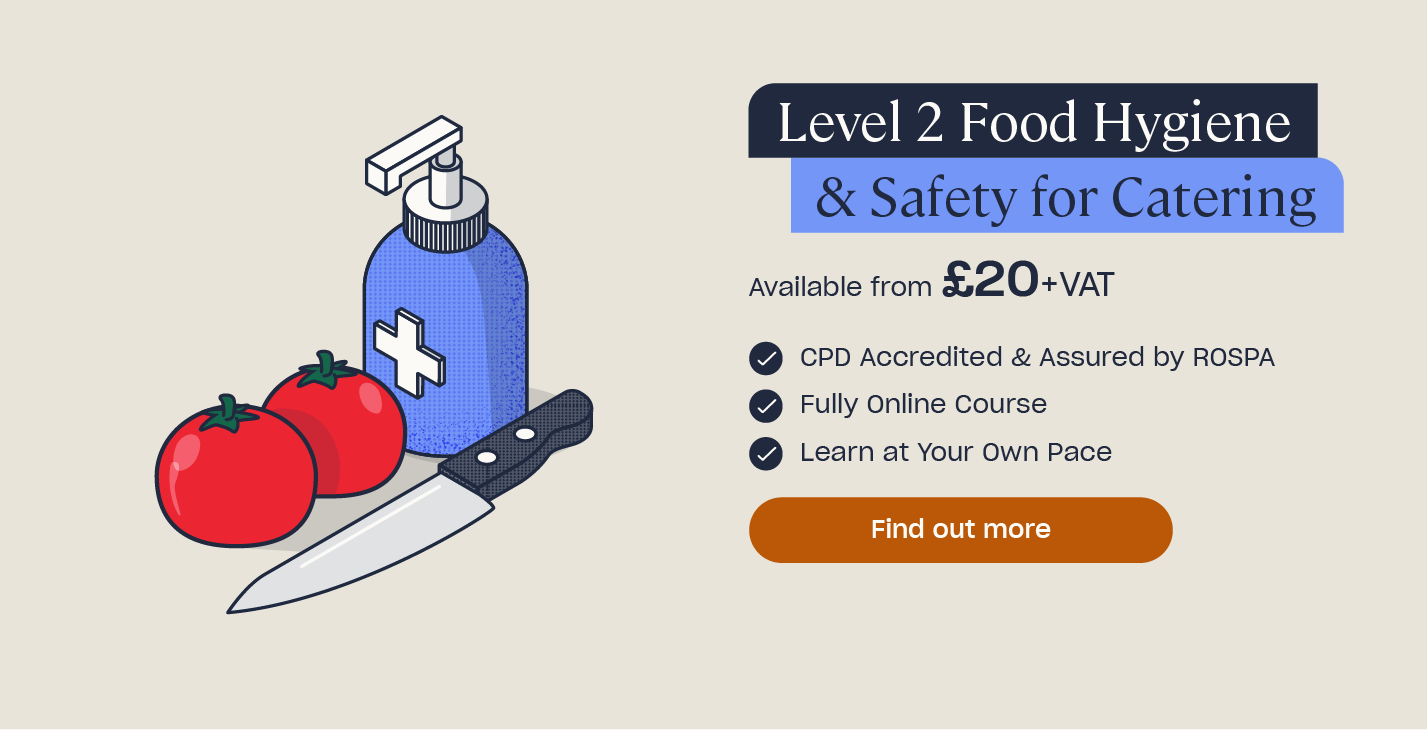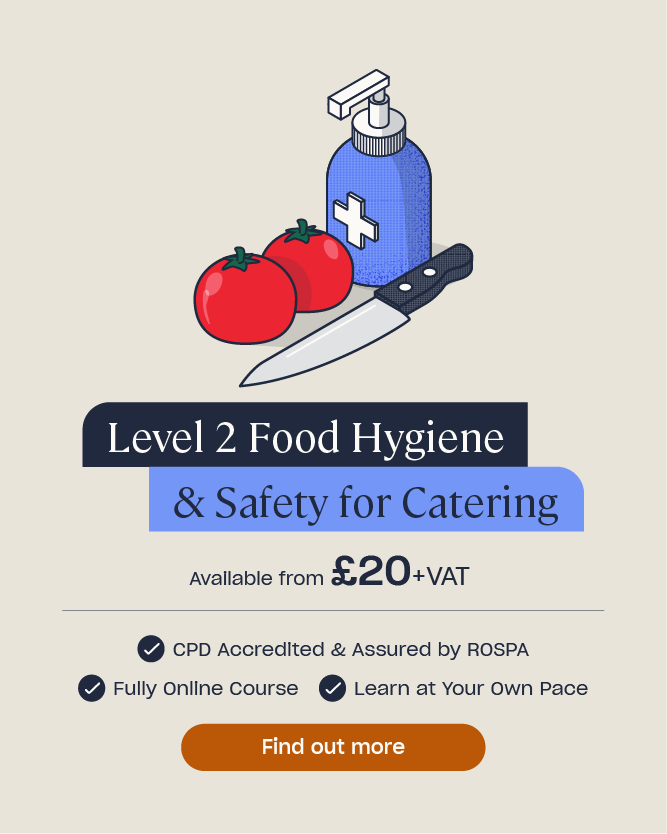Food Hygiene Rules and Guidance
As a food handler, it is essential that you are aware of the basic principles of good practice to ensure that you comply with food hygiene rules and regulations.
Use this list a starting point for your food safety knowledge – we’ve covered some of the basic areas that you will need to be familiar with and some further resources.
Need a Course?
This article provides an overview of food hygiene rules and guidance. If you are managing food hygiene in a business setting then our Level 3 Food Hygiene Training is a comprehensive online course covering every aspect of food hygiene legislation.
Personal Hygiene
- Correct hand washing is essential to prevent contamination.
- Always wash your hands in the specialist basin provided (never the sink used for washing equipment or food as this leads to contamination).
- Once wet, soap should be rubbed vigorously into hands, ensuring each hand is cleaned, including the fingertips, between the fingers and the wrist and forearm. 15-20 seconds should be spent rubbing soap in.
- Hands should be dried in a hygienic manner such as an air dryer, paper towel or clean roller towel. Using cloths, tea towels or overalls will cause contamination, so should be avoided.
- You should not wear watches, brooches, jewelled rings or earrings as they can gather dirt and bacteria and could drop into food. Avoid strong smelling perfumes and heavy makeup, as these can taint food products, especially those in high fat e.g. butter and cheese.
- Nobody suffering from the following illnesses should handle food: Diarrhoea or vomiting, skin infections or heavy colds, discharges from the eyes or ears.
Read more here: Personal Hygiene Tips for Food Service Staff
Food Hazards
- Keep raw and high risk foods separate.
- Keep foods out of the temperature danger zone – below 5°C or above 63°C.
- Make sure you use tongs or other utensils to make sure that food is handled as little as possible.
- Keep other raw foods away from foods that could also be contaminated by them.
- To kill bacteria, food must be cooked thoroughly (at least 70°C for 2 minutes). High risk foods that are eaten immediately following cooking are safe, providing the cooking temperature has been sufficiently high. If food is not to be eaten immediately and kept hot, it is necessary to use equipment which will hold the food at a temperature of 63°C or above.
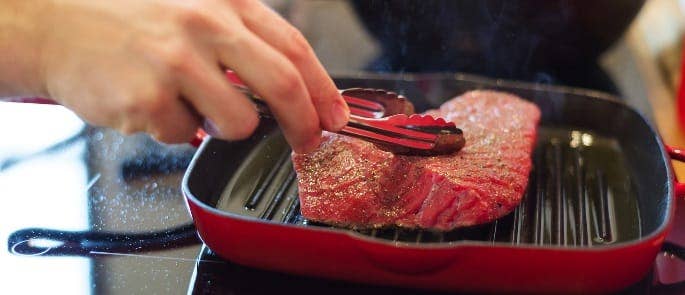
Chilling and Freezing Food
- The freezer should be operating at a maximum temperature of -18°C.
- Check the temperature of your fridge regularly and record it. Ideally it should be 1°C – 4°C. Take care not to leave the door open for long periods.
- Do not overload food above the load line in a freezer and label all foods with the correct dates to ensure that stock is rotated correctly.
- If you don’t have a separate fridge for raw foods, ensure that you keep the raw foods on the lower shelves with other foods above them.
- Do not put hot foods directly into the fridge.
Read more here: Do You Know Which Fridge Shelves You Should Store Your Food On?
Preventing Cross-contamination
- Clean work surfaces where raw meat and poultry have been handled, immediately after doing so.
- Keep utensils and equipment used in the preparation of raw meats and poultry separate from those used for other foods. If this is not possible, they must be washed and disinfected before being used on other foods.
- Maintain a high standard of general cleanliness of worktops and equipment.
- Keep separate cloths and chopping boards for use with different kinds of food.
- Keep wiping cloths used in raw food areas out of other areas. Use a disposable cloth if available.
- Work with clean cloths, disinfect them regularly. Remember a cloth is only as clean as the last place it wiped!
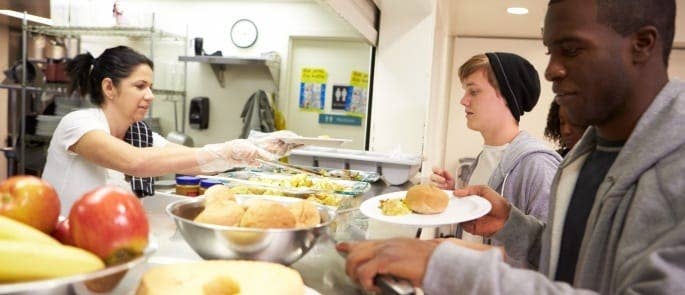
Serving Food
To maintain good hygiene control, food handlers must:
- Use tongs or spoons to pick up food (one for each kind of food).
- Place paper, polythene or a container on scales and weighing machines before using them.
- Never handle food and money at the same time.
- Make sure animals are kept out of food premises (except guide dogs in shops).
- Keep foods covered and away from the serving counter to prevent customers sneezing on them.
Read more here: Food Borne Diseases: A Complete List
Stock Control
- Foods should be bought from reputable suppliers. Regular checks need to be made to ensure physical objects or chemicals are not contaminating foods.
- Move old stock to the front of the fridge where it will be used first.
- Place new stock underneath old stock in freezers.
- Rotate fresh produce by date and condition. Use the ripe fruit first, leaving the less ripe fruit for later.
- Remember the acronym FIFO – First In First Out.
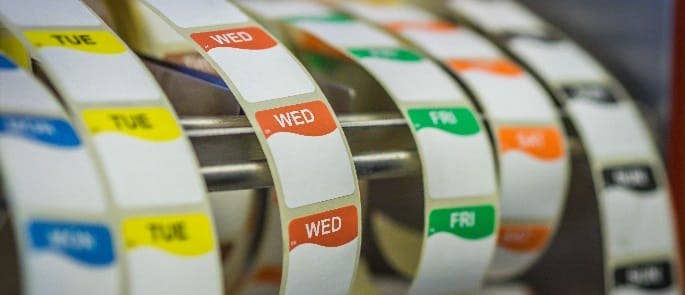
Waste
- Food waste and packaging rubbish must be disposed of properly as it can be a source of both bacterial and physical contamination.
- There should be bins both inside and outside.
- Indoor bins should have lids and ideally be foot operated and lined with a disposable polythene sack.
- Rubbish should be removed throughout the day to a dustbin with a tight fitting lid or a skip with a lid.
Read more here: 17 Ways to Reduce Food Waste in Your Restaurant
Running a Business
If you are running food hygiene premises you must make sure that:
- You register the premises with the local authority.
- The premises are designed, constructed, maintained and operated in a manner to prevent food contamination.
- There are adequate washing and personal hygiene facilities for staff.
- All staff are trained to an appropriate level and supervised to work hygienically.
- Appropriate action is taken to prevent the risk from food hazards.
What to Read Next:
- How Often Should I Renew My Food Hygiene and Safety Certificate?
- Food Safety Myths and Facts
- Health and Safety in the Kitchen Quiz
- The Importance of Food Hygiene Training
- Serving Medium Cooked Burgers – Safety Guidance
- What Type of Training Must Food Handlers Receive by Law?
- Level 2 Food Hygiene and Safety for Catering Training


